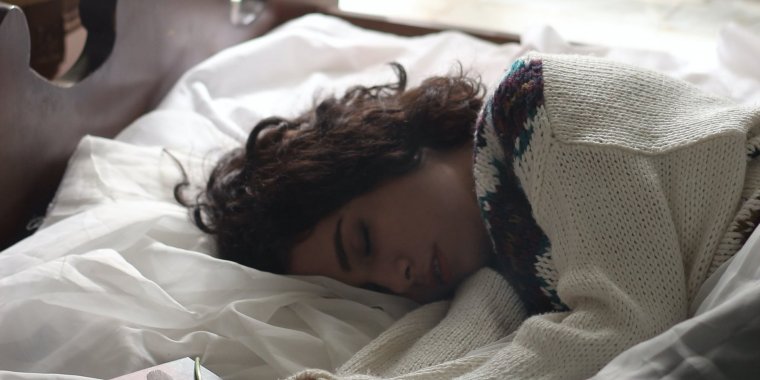| Health / Health News |
Study links neighborhood conditions to adolescent sleep loss
Conditions such as loud noise and few trees in neighborhoods seem to affect how much sleep adolescents get, according to a study. In a second study, researchers measured young people’s brainwaves to observe the troublesome effects of sleep loss on memory and cognitive function.

Study links neighborhood conditions to adolescent sleep loss. Photo: Zohre Nemati/Unsplash
According to the Centers for Disease Control and Prevention(link is external), about six out of 10 (57.8%) middle school students and seven out of 10 (72.7%) high school students in the United States do not get the recommended amount of sleep on school nights, increasing their risk for future chronic disease development.
Studies have shown a link between insufficient sleep and a higher risk of obesity, diabetes, depression, anxiety, and increased risk-taking behaviors in adolescents.
In the new residential environment study, which involved 110 adolescents, the researchers found that just small increases in neighborhood noise had a negative effect on sleep.
In scientific terms, each standard deviation above average noise levels was linked to a 16-minute delay in falling sleep and 25% lower odds of sleeping at least eight hours per night.
When the researchers looked at the effects of green space, however, they found that the teens who lived in neighborhoods with just one standard deviation above the average number of trees fell asleep 18 minutes earlier and experienced more favorable sleep times overall.
“For adolescents, the harms of insufficient sleep are wide-ranging and include impaired cognition and engagement in antisocial behavior,” said study author Stephanie L. Mayne, Ph.D., assistant professor of pediatrics at Children’s Hospital of Philadelphia and the Perelman School of Medicine of the University of Pennsylvania. “This makes identifying strategies to prevent and treat the problem critical. Our findings suggest that neighborhood noise and green space may be important targets for interventions.”
To record their sleep times and duration, the students in Mayne’s study wore wrist actigraphy watches for 14 days in both eighth and ninth grades. Their home addresses were mapped to show sound levels, tree canopy cover, and housing and population density.
The researchers then considered sex, race, parental education, household income and size, and neighborhood poverty to reach their conclusions.
In the second study, a team of researchers at the University of California (UC) Sleep Lab in Davis showed how sleep loss associated with reduced time in bed affected the brain waves of 77 adolescents aged 10 to 16.
This study was part of the lab’s longitudinal investigation of brain changes in adolescence, as measured by electroencephalogram (EEG).
The researchers predefined three different sleep schedules – four consecutive nights of seven, 8.5 or 10 hours of time in bed – and participants adhered to one of them each year. They slept with electrodes attached to their scalps to capture brain activity.
“Modest sleep restriction produced strong changes in the brain waves, which may explain how sleep loss impairs adolescents’ cognitive function,” said study author Ian G. Campbell, Ph.D., a professor in UC Davis’s psychiatry and behavioral sciences department. “We were surprised by the magnitude of the effect.”
Reducing time in bed from 10 to seven hours for four consecutive nights decreased sleep duration on the fourth night by 23%, but all-night sigma activity, which is important in memory consolidation and cognitive performance, went down by 40%.
During sleep, the brain replays, analyzes information, learns, and restores itself, all processes that sustain physical and mental health and overall performance.
According to the researchers, the EEG changes in response to even modest reductions of the adolescents’ time in bed indicate insufficient sleep recovery. (National Institutes of Health)
YOU MAY ALSO LIKE





